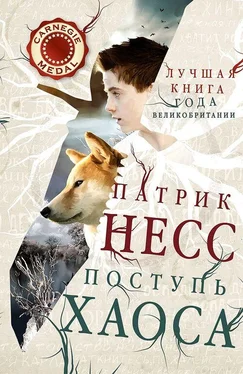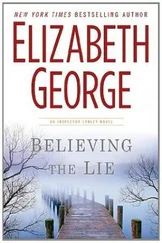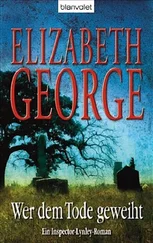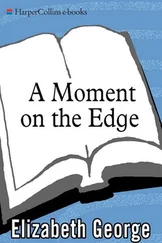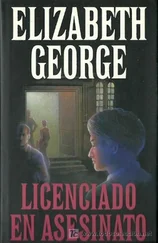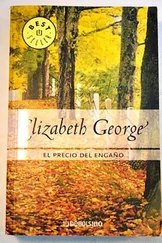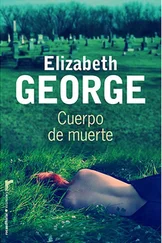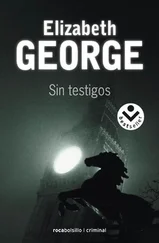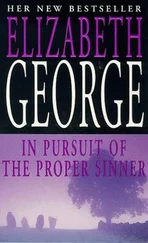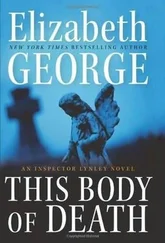TAKE A LOOK AT THESE.”
Lynley passed the folder of photo graphs across the coffee table to St. James. He picked up his pint of Guinness and thought about straightening The Potato Eaters or cleaning the dust from both the frame and the glass of Rouen Cathedral in order to see if it was actually in Full Sunlight as it appeared to be. Deborah seemed to read his mind at least partially. She muttered, “Oh bother, this is driving me crazy,” and dealt with the Van Gogh print before plopping back down on the sofa next to her husband. Lynley said, “Bless you, my child,” and waited for St. James’ reaction to the crime-scene material which Lynley had brought back with him from Clitheroe.
Dora Wragg had been good enough to see to their needs in the residents’ lounge. While the pub was already closed for the latter part of the afternoon, two elderly women in heavy tweeds and hiking boots had still been sitting by what remained of the fire when Lynley returned from his visits with Maggie, the police, and the medical examiner. Although the two women had been engaged in a sombre but enthusiastic discussion about “Hilda’s sciatica…and isn’t the poor dear a martyr to it, luvvie?” and seemed unlikely to eavesdrop on any conversation unconnected to Hilda’s hips, Lynley had taken one look at their eager, sharp faces and decided that discretion was the better part of conversing openly about anyone’s death.
So he waited until Dora placed a Guinness, a Harp, and an orange juice on the coffee table in the residents’ lounge and took herself off to the nether regions of the inn before he handed over the folder to his friend. St. James studied the photographs first. Deborah gave them a glance, suffered a frisson of aversion, and quickly looked away. Lynley couldn’t blame her.
The photographs of this particular death seemed more disquieting than many others he had seen, and at first he couldn’t understand why. He was, after all, no stranger to the myriad ways in which an unexpected death occurs. He was used to the result of strangulations— the cyanosed face, the bulging eyes, the blood-froth at the mouth. He had seen his share of blows to the head. He’d examined a variety of knife wounds — from cut throats to one virtual disembowelment not unlike the Whitechapel murder of Mary Kelly. He’d seen victims of bombings and victims of shootings, their limbs torn off and their bodies mutilated. But there was something personally horrifying about this death, and he couldn’t put his finger on what it was. Deborah did it for him.
“It went on and on,” she murmured. “It took some time, didn’t it? Poor man.”
And that was it. Death hadn’t come in an instant for Robin Sage, a moment’s violent visitation via gun, knife, or garrotte with oblivion following hard on its heels. It had taken him slowly enough for him to realise what was happening and for his physical suffering to be acute. The crime-scene pictures illustrated that.
They’d been taken in colour by the Clitheroe police, but what they captured was predominantly black and white. The latter constituted a good six inches of newly fallen snow covering the ground and powdering the wall next to which the body lay. The former constituted the body itself, dressed in black clerical garb beneath a black overcoat that was bunched round the waist and hips as if the vicar had tried to slither out of it. But even here the black did not achieve complete ascendancy over the white, for the body itself — like the wall its hand reached towards — wore a thin but thorough membrane of snow. This had been documented in seven photographs before the crime-scene team had brushed the snow from the body into the collection jars that would later be deemed non-evidential, considering the circumstances of the death. And once the body was brushed free of snow, the photographer had gone to work once again.
The rest of the pictures spelled out the nature of Robin Sage’s death agony. Dozens of deep arcing gouges in the ground, thick mud on his heels, earth and fl akes of grass beneath his nails testified to the manner in which he had tried to escape the convulsions. Blood on his left temple, three slits on his cheek, one shattered eyeball, and a heavily ensanguined stone beneath his head suggested the strength of those same convulsions and how little he was able to do to master them once he understood there was no escape. The position of his head and neck — thrown back so far that it seemed inconceivable no vertebrae were broken — indicated a frantic battle for air. And the tongue, a swollen mass chewed nearly in half, protruded from the mouth in an eloquent statement about the man’s fi nal moments.
St. James went through the pictures twice. He set two aside, a close-up of the face and a second of one of the hands. He said, “It’s heart failure if you’re lucky. Asphyxia if you’re not. Poor bastard. He was unlucky as the devil.”
Lynley didn’t need to examine the photographs St. James had chosen to support his point. He’d seen the bluish colour of the lips and ears. He’d noted the same of the fi ngernails. The undamaged eye was prominent.
Lividity was well-developed. All were indications of respiratory failure.
“How long do you suppose it took him to die?” Deborah asked.
“Too long by half.” St. James glanced at Lynley over the autopsy report. “You spoke with the pathologist?”
“Everything was consistent with hemlock poisoning. No specific lesions of the stomach’s mucous membrane. Gastric irritation and oedema of the lungs. Time of death between ten that night and two the next morning.”
“What did Sergeant Hawkins have to say? Why did Clitheroe CID buy the accidental-poisoning conclusion so quickly and back off from an investigation? Why did they let Shepherd handle it on his own?”
“CID had been at the site while Sage’s body was still there. It was clear that, the external injuries he’d done to his face aside, his death was caused by some sort of seizure. They didn’t know what sort. The detective constable on the scene actually thought it was epilepsy when he saw the tongue—”
“Good God,” St. James muttered.
Lynley nodded agreement. “So after they took the photographs, they left it up to Shepherd to gather the details leading up to Sage’s death. Essentially, it was his call. At the time, they didn’t even know Sage had been out in the snow all night as no one had even reported him missing until he failed to show up to perform the Townley-Young wedding.”
“But once they knew he’d been to dinner at the cottage? Why didn’t they step in?”
“According to Hawkins — who frankly was a bit more forthcoming when I was standing before him, warrant card in hand, than when I had him on the phone — three factors infl uenced the decision: the involvement of Shepherd’s father in the constable’s investigation, what Hawkins honestly assumed to be the pure coincidence of Shepherd’s visit to the cottage on the night Sage died, and some additional input from forensic.”
“The visit wasn’t a coincidence?” St. James asked. “Shepherd wasn’t making rounds?”
“Mrs. Spence phoned him to come to her,” Lynley replied. “She told me she wanted to testify as much for the coroner’s jury at the inquest, but Shepherd insisted on claiming he’d just dropped by on his rounds. She said he lied because he wanted to protect her from local gossip and unfriendly speculation after the verdict was in.”
“That doesn’t seem to have worked, if the other night in the pub is any indication.”
“Quite. But here’s what I fi nd intriguing, St. James: She was perfectly willing to admit to the truth of phoning Shepherd when I spoke to her this morning. Why bother to do that? Why didn’t she stick with the story they’d agreed on, one that was generally accepted and believed, even if the villagers aren’t particularly in love with it?”
Читать дальше
